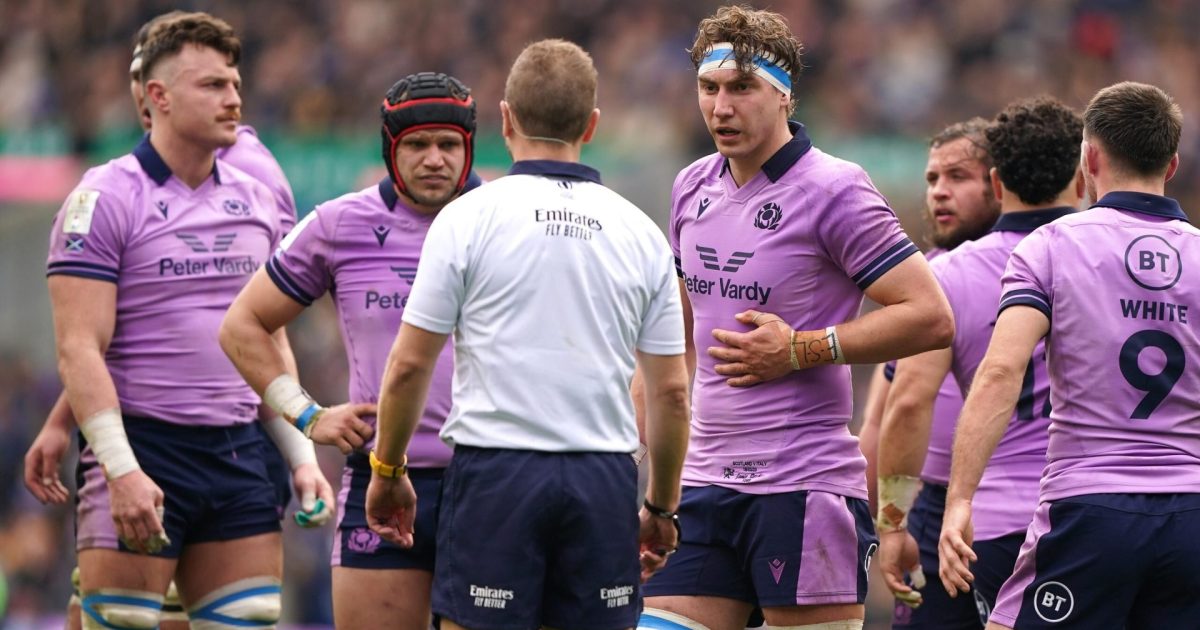The subtle change to TMO useage in this year's Six Nations

It is easy for us all to forget that the use of the TMO, like VAR in football and to a lesser extent the third umpire in cricket, is still a relatively recent innovation when considered in the wider context of how long the three sports have been played professionally.
Adaptations are therefore essential and I’ve thought for a while that we need more uniformity in how the TMO interfaces with the referee. Based on the evidence of Super Saturday World Rugby has similar thoughts.
Since referees operate with different TMO’s from week to week in both club and international rugby it seems that a clearly-defined, uniformly agreed operating method benefits everyone.
I know from speaking with an English Premiership TMO that this is very much the direction that the RFU has taken domestically in an attempt to bring uniformity across the piece.
But when officials are brought together from around the world on the international stage in addition to language becoming a factor, slight differences in approach between officials from – for example – Super Rugby to those in the Top 14, means more variables come into play.
I also sense that perceived relative seniority of the referee and the TMO has a bearing on how things operate. This should definitely not be the case, but would TMO’s be as comfortable challenging Wayne Barnes or Jaco Peyper as they are Andrew Brace or Nika Amashukeli?
It became quickly evident that TMO’s appointed to the matches in Edinburgh, Dublin and Paris were watching in the TV truck a few seconds behind real time and rather than waiting to be asked for an opinion instead had an open mike with which they immediately advised the man in the middle when they saw foul play.
A good example of this came when Joy Neville intervened to point out an Italian “no arms” tackle which Nigel Owens in commentary described as a “speed bump tackle.” As a result of this intervention a penalty was reversed and Wales scored from the resulting lineout.
Jaco Peyper was on more than one occasion heard to respond “thanks Marius” presumably to being fed information from former international ref turned TMO Marius Jonker which TV viewers were unable to hear.
Since this ‘in the background’ approach minimises review stoppages it seems eminently sensible – let’s hope it is quickly adopted across the international game prior to the World Cup.
While discussing TMO protocols, I would also tweak regulations governing when the referee is and isn’t permitted to go upstairs for a review.
Currently he/she is only able to request input on suspected foul play or in the run-up to and scoring of a try. As Gardner pointed out to a slightly frustrated Italian forward, he was therefore not able to double-check a close-quarter knock-on called against the Azzurri when they were pressing hard for a match-equalling try in the closing seconds.
Fortunately for all concerned the officials had the decision spot on and Scotland promptly went the length of the field to seal the game and deny Italy not only a shot at opening their 2023 Six Nations account but cruelly also a losing bonus point.
Throw this scenario forward a few months to the World Cup final and imagine a disputed knock-on stopping the flow of a side that is pressing hard in the closing minutes for a winning score. I can’t help but think everyone involved would rather the officials were permitted to apply belt and braces and check the decision than risk the world’s biggest rugby event being determined by a small mistake which we all see replayed seconds later?




















































Outlaw questions like "Try or No Try?".
In all cases the ref should make a call on what he/she and the ARs saw, and do so within a short time window (like 10sec). All TMO questions should be very specific, like "grounded or not?", or "please check for #4 offsides at the ruck". TMO review should also be timed and there should be a high bar for "clear and obvious", in order to overturn the initial ref decision.
And WR should develop a lexicon in which we distinguish a referee always being situational right, from the decisions being sometimes technically mistaken or marginal. We need to acknowledge and embrace both realities, and have an adult way of talking about them.
Since in Rugby Law, the referee is the sole judge of fact and of law ON THE FIELD, I suggest the way to standardise TMO and AR input is for the referee to go to them for confirmation if he/she is in doubt as to what decision has been reached ON THE FIELD. This way would mean the referee is not constantly having the TMO or an AR ‘bleating in the ear’ since there is plenty for the referee to concentrate on in the game itself.